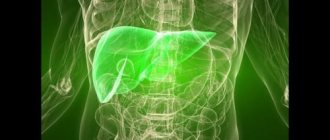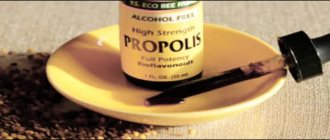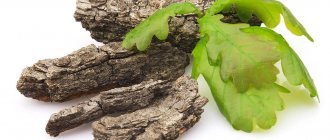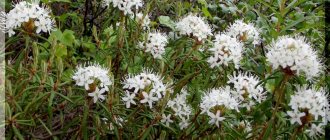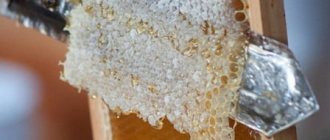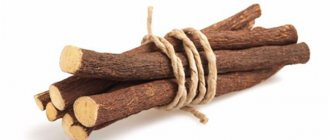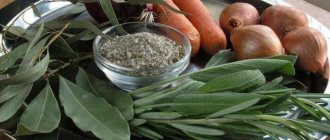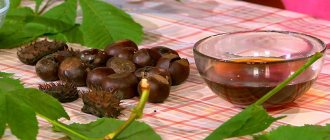Propolis is of great importance for bees, as it ensures cleanliness, sterility and a “healthy atmosphere” in the hive. It protects the bee house from harmful external influences and mercilessly destroys different types of viruses, bacteria and even some fungi. Propolis can act in a similar way on the human body. Thanks to its unique properties, this substance is able to cope with a variety of both internal and external diseases. However, to achieve a positive effect, it must be used correctly. To solve various problems with the body, dry propolis is used quite rarely; most often, treatment occurs with the help of products prepared from it. One of these remedies is propolis tincture with alcohol - this is what we will talk about today.
What is propolis
Propolis is a product produced by bees as a building material for hives. They get it by collecting pollen from flowers, buds, adding wax and other useful substances to it. Bees need propolis to seal cracks in their hives. This serves as protection against the penetration of pathogenic bacteria. If a foreign insect enters the hive, the bees smear it with propolis. Embalmed in this way, it can be stored there for a long time and not decompose.
In appearance, propolis is a sticky yellow-brown substance. But propolis comes in green, reddish, and gray colors. When it freezes, it hardens and turns to stone. It has a specific smell and taste. When stored for a long time, propolis turns black.
The taste and smell of propolis are similar to honey, because it also contains pollen and greens.
What are the benefits of alcohol tincture of propolis?
Propolis is a resin-like substance produced by bees to disinfect honeycombs, seal the hive, and insulate objects that might accidentally fall into it. It can have different colors, mainly the shade depends on which plant the resin was extracted from by insects for its production. Brown, gray, brown, reddish and even greenish propolis are equally useful and suitable for preparing tinctures. Exactly what beneficial properties this substance has was described in one of our articles. Propolis tincture with alcohol, in principle, has the same properties. The main one is a powerful bactericidal and bacteriostatic effect, which gives the product the ability to destroy pathogens. Moreover, taking it orally, unlike most antibiotics, does not lead to dysbacteriosis, but on the contrary, improves the composition of the intestinal microflora. In addition, alcohol tincture of propolis has a wound healing and analgesic effect. It is an excellent antiseptic and anti-inflammatory agent. With its help, you can strengthen the immune system, rid the body of toxins, improve metabolic processes and prevent the occurrence of blood clots.
What are the beneficial properties
This useful product has not yet been fully studied, but it is known that it has the following properties:
- disinfectant;
- antibacterial;
- wound healing;
- immunomodulatory;
- anti-inflammatory;
- antioxidant.
Thanks to this, propolis can effectively relieve inflammation, deactivate harmful bacteria, heal wounds, relieve pain and even stop cancer processes.
Pharmacology of propolis - a modern view of the problem
Sergeev A.N. Doctor of Medical Sciences, Head Department of Aerobiology, Research Institute of Aerobiology, State Scientific Center for Aerobiology “Vector”, Koltsovo village, Novosibirsk region.
Propolis is a traditional remedy, widely used in folk medicine and has a wide range of biological activities. At the same time, over the past ten years, pharmacologists have made significant advances in understanding the mechanisms of its action. At the same time, the attention of researchers is concentrated primarily on the study of its antitumor, antioxidant, anti-inflammatory, hepatoprotective and antimicrobial properties [2].
In the last three years, the number of publications devoted to the study of the mechanisms of the antitumor action of individual substances that make up propolis has sharply increased. Thus, it was discovered that a number of phenolic compounds of propolis, such as chrysin [18], caffeic acid, its phenylethyl ester [13], quercetin [12], propolines A, B, C, D, E, F [5] have the property of stopping growth of tumor cells in the G2/M phase of the cell cycle with the subsequent development of apoptosis, and also prevent metastasis [12]. In this regard, similar results were obtained both in experiments with inoculation of continuous syngeneic tumors in animals [12] and in models of chemically induced carcinogenesis [16]. At the same time, a correlation was observed between the severity of antioxidant properties of these compounds and the magnitude of the antitumor effect [4].
At the same time, there is evidence that this is not the only possible mechanism of the antitumor effect of propolis, and partly it can be realized due to the ability in vivo to enhance the antitumor cytotoxicity of macrophages [11].
Conflicting data on the combination of immunostimulating [6] and anti-inflammatory [1] effects in propolis have aroused interest in the mechanisms of its immunotropic action. It was found that in high doses propolis has a predominantly anti-inflammatory effect, and in low doses it has an immunostimulating effect [6]. It has also been shown that the main substances of propolis responsible for the manifestation of immunostimulating and anti-inflammatory effects are caffeic acid phenylethyl ester and galangin [3].
continues on the mechanisms of the antioxidant effect of propolis in experimental models of toxic liver damage [9], thermal injury [7], ischemia-reperfusion of the heart muscle [14] and brain [8].
The protective effect of propolis in these pathological conditions is associated mainly with caffeic acid phenylethyl ester, which suppresses the release of heat shock proteins, activation of NO synthetase, directly inhibits the release of mitochondrial cytochrome C, inhibits lipid peroxidation, activates phenolsulfotransferase and glutathione transferase.
Regarding the mechanisms of the antibacterial action of propolis, the dominant point of view is still the synergistic action of a wide range of its components, belonging to various classes of chemical compounds, such as terpenoids, flavones, chalcones, etc. It is noteworthy that although the chemical composition of propolis varies widely depending on the geographical area, the average value and spectrum of antibacterial activity are generally similar. It is noted that the antibacterial effect of each of the active components of propolis is less than that of the unfractionated extract. Against this background, noteworthy is the work in which, in a sample of propolis, the antibacterial activity against gram-positive microflora with multiple antibiotic resistance was associated exclusively with galangin (3,5,7-trihydroxyflavone) and its minimum inhibitory concentration was significantly lower than that of the unfractionated extract [15].
The antihyperglycemic effect of propolis, discovered in 2004 by Chinese [17] and Japanese [10] scientists, is completely new, which opens up new prospects for its use in diabetes mellitus, although what mechanisms underlie it is still unclear.
Previously, some studies noted a positive result from the use of propolis in the treatment of impotence, although the mechanism of its therapeutic effect in this pathology remains unknown. At the same time, it is known that one of the main components of propolis, chrysin, is capable of inhibiting the activity of aromatase, an enzyme that converts the male sex hormones androstenedione and testosterone into estrone and estradiol, respectively. On the other hand, in studies on healthy male volunteers who received propolis and honey containing chrysin, no changes in testosterone metabolism were noted [5].
However, the possibility cannot be excluded that this mechanism may operate under pathological conditions, which requires further study.
Based on an analysis of the literature on propolis over the past 3 years, it can be noted that mainly research focuses not so much on discovering new biological effects of propolis, but on uncovering the mechanisms of already known ones. The study of individual compounds that make up propolis will make it possible in the future to develop more clear criteria for assessing its quality and create new drugs based on it.
Literature:
Ansorge S., Reinhold D., Lendeckel U. Propolis and some of its constituents down-regulate DNA synthesis and inflammatory cytokine production but induce TGF-beta1 production of human immune cells. //Z. Naturforsch[C]. — 2003 Jul-Aug. - 58(7-8). – p. 580-589.
- Banskota A.H., Tezuka Y., Kadota S. Recent progress in pharmacological research of propolis. //Phytother. Res. — 2001 Nov. — 15(7). – p. 561-571.
- Borrelli F., Maffia P., Pinto L. et al. Phytochemical compounds involved in the anti-inflammatory effect of propolis extract. //Fitoterapia. — 2002 Nov. — 73 Suppl 1. — S53-63.
- Chen CN, Weng MS, Wu CL et al. Comparison of Radical Scavenging Activity, Cytotoxic Effects and Apoptosis Induction in Human Melanoma Cells by Taiwanese Propolis from Different Sources. //Evid. Based Complement Alternate. Med. — 2004 Sep 1. — 1(2)/ — p.175-185.
- Gambelunghe C., Rossi R., Sommavilla M. et al. Effects of chrysin on urinary testosterone levels in human males. //J. Med. Food. — 2003 Winter — 6(4). – p. 387-390.
- Han S., Sung K.H., Yim D. et al. Activation of murine macrophage cell line RAW 264.7 by Korean propolis. //Arch Pharm Res. — 2002 Dec. — 25(6). – p. 895-902.
- Hosnuter M., Gurel A., Babuccu O. et al. The effect of CAPE on lipid peroxidation and nitric oxide levels in the plasma of rats following thermal injury. //Burns. — 2004 Mar. — 30(2). – p. 121-125.
- Irmak MK, Fadillioglu E., Sogut S. et al. Effects of caffeic acid phenethyl ester and alpha-tocopherol on reperfusion injury in rat brain. //Cell. Biochem. Funct. — 2003 Sep. — 21(3). – p. 283-289.
- Lahouel M., Boulkour S., Segueni N., Fillastre JP. The flavonoids effect against vinblastine, cyclophosphamide and paracetamol toxicity by inhibition of lipid-peroxydation and increasing liver glutathione concentration. //Pathol. Biol (Paris). — 2004 Jul. — 52(6). – p. 314-322.
- Murata K., Yatsunami K., Fukuda E. et al. Antihyperglycemic effects of propolis mixed with mulberry leaf extract on patients with type 2 diabetes. //Altern. Ther. Health Med. — 2004 May-Jun. — 10(3). – p. 78-79.
- Orsolic N., Basic I. Immunomodulation by water-soluble derivative of propolis: a factor of antitumor reactivity. //J. Ethnopharmacol. — 2003 Feb. - 84(2-3). – p. 265-273.
- Orsolic N., Knezevic A.H., Sver L. et al. Immunomodulatory and antimetastatic action of propolis and related polyphenolic compounds. //J. Ethnopharmacol. — 2004 Oct. - 94(2-3). – p. 307-315.
- Orsolic N., Sver L., Terzic S. et al. Inhibitory effect of water-soluble derivative of propolis and its polyphenolic compounds on tumor growth and metastasizing ability: a possible mode of antitumor action. //Nutr. Cancer. – 2003. – 47(2). — p. 156-163.
- Ozer MK, Parlakpinar H., Acet A. Reduction of ischemia—reperfusion induced myocardial infarct size in rats by caffeic acid phenethyl ester (CAPE). //Clin. Biochem. — 2004 Aug. — 37(8). – p. 702-705.
- Pepeljnjak S., Kosalec I. Galangin expresses bactericidal activity against multiple-resistant bacteria: MRSA, Enterococcus spp. and Pseudomonas aeruginosa. //FEMS Microbiol. Lett. — 2004 Nov 1. — 240(1). – p. 111-116.
- Sugimoto Y., Iba Y., Kayasuga R. et al. Inhibitory effects of propolis granular APC on 4-(methylnitrosamino)-1-(3-pyridyl)-1-butanone-induced lung tumorigenesis in A/J mice. //Cancer Lett. — 2003 Apr. 25. - 193(2). – p. 155-159.
- Wang NZ, Li D. Effect of combined propolis-ethanol-extract and Shaoyao-Gancao-tang on blood sugar levels in rabbits with alloxan induced experimental diabetes. //Asia Pac. J. Clin. Nutr. – 2004. – 13 (Suppl): S66.
- Woo KJ, Jeong YJ, Park JW, Kwon TK Chrysin-induced apoptosis is mediated through caspase activation and Akt inactivation in U937 leukemia cells. //Biochem. Biophys. Res. Commun. — 2004 Dec 24.- 325(4) – p.1215-1222.
Composition of propolis
The product can be used both externally and internally to treat many diseases.
After all, its chemical composition is quite rich:
- magnesium;
- sodium;
- potassium;
- iron;
- zinc;
- cobalt;
- manganese;
- copper;
- phosphorus;
- aluminum;
- strontium;
- fluorine;
- tin;
- antimony.
These minerals are necessary for the proper functioning of many body systems (cardiovascular, endocrine, bone, nervous, urinary). But the highest content in it is calcium, which is simply necessary for the strength of bones, nails, hair, teeth, and for children - for proper growth and development.
In addition, the product contains many vitamins (A, B, C, P, D, E). It also contains glycine, aspargine and many other amino acids.
Method for determining naturalness
To determine the quality of propolis, there are a number of specific indicators:
- color – yellowish, brownish or dark green;
- smell – aromatic, rich;
- taste – bitterish, slightly burning;
- consistency – when cold, hard, heterogeneous.
High-quality propolis contains up to 30% wax and up to 20% impurities. It is prepared in the summer, collected from the hives and rolled into small balls of 100 grams. The alcohol solution of propolis is transparent, has a pleasant aroma and brown color.
What does propolis help with?
This product can help with a variety of diseases.
It is used for:
- stomach and duodenal ulcers;
- uterine fibroids;
- fungal infections of nails;
- bacteria Helicobacter pylori;
- disorders of the pancreas;
- sinusitis, colds;
- hemorrhoids;
- prostate diseases;
- inflammation of the intestines;
- liver diseases.
For stomach ulcers, you need to chew propolis and swallow. This relieves pain and inflammation. It is used along with other drugs for this disease.
For uterine fibroids, suppositories with propolis and tampons are made, which are inserted deep into the vagina.
For Helicobacter pylori, propolis tincture is taken orally. Ointments and suppositories with propolis help with hemorrhoids.
Application
The use of bee glue was first mentioned in Ancient Egypt, and a little later in Ancient Greece, as written about in the works of famous ancient doctors. In Rus', the use of this product is written in ancient medicinal books.
Propolis is used as an independent product or together with other components to enhance the therapeutic effect. Popular lollipops, tablets and chewing gums are good for colds, stimulating the body's protective function. This product has been proven to remove cholesterol, suppress pathological cells and prevent the development of cancer cells. Also, propolis-based preparations increase the body's resistance to irradiation.
Bee glue is used in briquettes, balls or in crumbled form.
How to be treated with propolis
There are many recipes for preparing propolis tinctures and ointments. But before you use any prescription, you should consult your doctor.
Before you start preparing the tincture, you need to clear it of impurities. It will take longer, but pure propolis is much more beneficial.
A stomach ulcer occurs when an aggressive environment destroys the stomach lining. Propolis kills Helicobacter pylori, which causes ulcers. At the same time, it regenerates the gastric mucosa.
- There is a recipe for ulcers: dilute sixty drops of 30% propolis tincture in a glass of milk. Use the product half an hour before meals three times a day. As a result of treatment, the ulcer scars, nausea and vomiting disappear.
- For gastritis, you can take the tincture twenty to forty drops three times a day. You can make your own propolis oil. To do this, take propolis tincture and add vegetable oil in a ratio of 1:10. The resulting product must be boiled and strained through cheesecloth. Take thirty drops in milk three times a day.
- You can make decoctions of propolis with herbs (fennel, licorice, mint, linden). Take half a glass three times a day.
- For uterine fibroids, you should take ten drops of propolis tincture orally three times a day. At the same time, tampons are placed in the vagina.
- For pancreatitis, half a teaspoon of tincture is diluted in half a glass of water. Take trijls before meals.
- Propolis suppositories help with hemorrhoids. You can prepare them yourself.
- For liver diseases, drop twenty drops of tincture into a glass of water and take three times a day for a week. Chaga with propolis helps well with jaundice.
- Compresses with propolis help with colds. You need to moisten the cloth with propolis and apply it to your back. The procedure lasts forty minutes.
You can gargle with propolis tincture diluted in warm water.
It is useful to mix propolis with honey. This mixture strengthens the immune system and helps get rid of infections.
general characteristics
Propolis is a resinous substance that bees collect from buds on trees and bushes in the spring and then process with their enzymes. After collecting nectar and pollen for honey from forbs (approximately in October), the bees begin intensive preparation for the winter period. To do this, worker bees begin to collect a resinous substance from the buds and bark of trees.
There is still no consensus on the origin of propolis. Researchers of the theory of the external origin of the substance are of the opinion that bees extract it from the secretions of the resinous mass of the buds and bark of birch and poplar trees. According to this theory, the process of collecting propolis occurs as follows: bees take resins, as when collecting pollen, and fly to the hive to give the substance to other bees for processing. The balm obtained after processing in the hive is an integral part of bee glue. Researchers of another theory believe that there are special propolis bees that process pollen. As a result of such processing with the addition of third-party impurities, propolis is obtained as the result of a whole complex of substances.
Bee glue performs the following tasks in the hive:
- clogs the honeycombs with a bar;
- sterilizes cells;
- embalms potentially dangerous foreign objects in cells;
- seals cracks from moisture and drafts;
- polishes honeycombs before laying eggs;
- serves as an antiseptic material.
Propolis has a pleasant aroma of pine needles, honey, buds, wax and vanilla. It varies in color from grayish green to dark brown. Propolis tastes bitter. During combustion, the ouse releases valuable aromatic resins. Each bee colony collects about 40-50 grams of bee glue. It is worth noting that the famous mumiyo is a product of wild bees living in mountainous areas. This mummy has more pronounced medicinal properties, which has a natural pattern: products of wild origin are more useful than homemade ones.
Thanks to bee glue, the bees themselves protect themselves from all kinds of bacteria and viruses. To date, there are six known natural antibiotics produced by bees:
- honey;
- royal jelly;
- beebread;
- bee venom;
- wax;
- propolis.
When bees are overcrowded, these natural bee antibiotics are necessary for their normal functioning.
